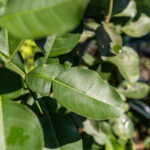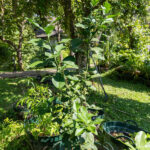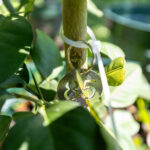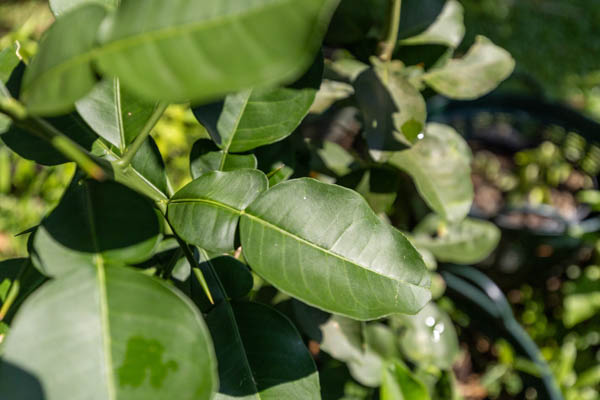มะกรูด (Makrut) / Kaffir Lime
Family: Rutaceae
Citrus hystrix, known in Thailand as มะกรูด (Makrut), is a small citrus tree recognized by its distinctive double leaves and fragrant fruit. It plays a vital role in Thai herbal medicine and cooking, offering both aromatic and cleansing properties.
Botanical Characteristics
This evergreen shrub or small tree grows up to 4–5 meters tall with thorny branches and glossy, dark green leaves. The leaves are double-lobed, giving them a unique hourglass shape. Its green, bumpy fruit has a thick rind and a strongly aromatic essential oil.
Use in Thai Traditional Medicine
Makrut leaves and fruit are used for cleansing the body and mind. The fruit juice and rind act as natural disinfectants and are applied to treat scalp conditions, dandruff, and insect bites. Internally, decoctions help relieve digestive discomfort and reduce inflammation.
Medicinal Compounds
Contains high levels of citronellal, limonene, and β-pinene—essential oils known for their antibacterial, antifungal, and anti-inflammatory effects. The fruit’s compounds stimulate digestion and detoxification, while the aroma promotes mental clarity and relaxation.
Culinary and Cultural Uses
The leaves are a cornerstone of Thai cuisine, used in soups, curries, and stews for their bright citrus aroma. The fruit rind is also used in cleaning products and perfumes. Traditionally, Makrut is seen as a purifier—symbolizing cleanliness, freshness, and spiritual renewal.
Cultivation Notes
Citrus hystrix thrives in tropical climates with full sunlight and well-drained soil. Regular pruning and watering promote healthy foliage. It can be grown in pots or directly in the ground and benefits from organic compost or citrus fertilizer.
Disclaimer: This information is provided for educational and historical purposes only. It is not intended as medical advice. Always consult a qualified healthcare professional before using any herbal preparation.




